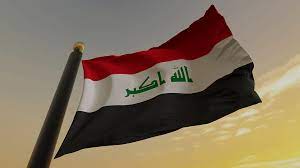
(Fitch Ratings, 5.Apr.2023) — Fitch Ratings upgraded Saudi Arabia’s Long-Term Foreign-Currency Issuer Default Rating (IDR) to ‘A+’ from ‘A’. The Outlook is Stable.
A full list of rating actions is at the end of this rating action commentary.
KEY RATING DRIVERS
Balance Sheet Strength Drives Upgrade: The upgrade of Saudi Arabia’s ratings reflects its strong fiscal and external balance sheets, with government debt/GDP and sovereign net foreign assets (SNFA) considerably stronger than both the ‘A’ and ‘AA’ medians, and significant fiscal buffers in the form of deposits and other public sector assets. The upgrade also assumes ongoing commitment to gradual progress with fiscal, economic and governance reforms. Oil dependence, weak World Bank governance indicators and vulnerability to geopolitical shocks remain relative weaknesses, although there are some indications of improvement in these factors.
External Finances Formidable: Foreign reserves excluding gold remained broadly stable in 2022, at USD459 billion, as financial account outflows in the form of investments and deposits abroad offset the substantial current account surplus (13.6% of GDP; $150bn). Saudi Arabia has one of the highest reserve coverage ratios among Fitch-rated sovereigns at 18 months of current external payments. We forecast reserves to decline marginally to $445bn in 2023-2024, as the current account surplus falls close to 7.5% of GDP in 2023 and 4% in 2024, due to lower oil revenue, but that outward investments by large institutions such as the Public Investment Fund (PIF) and pension funds moderate.
We forecast SNFA to remain above 55% of GDP in 2023-2024, large relative to the ‘A’ median (3.1% of GDP) and the ‘AA’ median (33% of GDP), although substantially lower than regional peers in the ‘AA’ rating category. SNFA include central bank foreign reserves as well as the foreign assets of pension funds and the PIF, minus the foreign liabilities of the government, central bank and the PIF.
Low Government Debt: Gross government debt/GDP declined to 23.8% in 2022, half the ‘A’ median of 51%. We forecast that government debt/GDP will increase to 24.7% in 2023 and rise but remain below 30% in 2024-2025. Government deposits at the Saudi Central Bank, comprising the government current account and the fiscal reserve, increased to SAR463bn (11.1% of GDP) in 2022. This put net government debt at just 12.7% of GDP. Furthermore, pension funds held around 4.5% of GDP (SAR184bn) of domestic government debt in 3Q22 and could increase their holdings if needed.
Budget Close to Balance: We forecast the budget surplus to reduce to balance in 2023, from 2.5% of GDP in 2022, as lower oil prices (Brent crude at $85/barrel from USD99/barrel in 2022) and lower production (10.14m b/d) offset higher non-oil revenue. We assume that after a sharp increase in 2022, total spending will decline by 1.9% yoy. This implies spending will be 2.5% above budget, while we also expect non-oil tax revenue to be higher than budgeted.
We forecast a budget deficit of 1.2% of GDP in 2024, assuming average oil prices fall to $75/b, partially offset by higher production. Non-oil revenue will increase, but not sufficiently to outweigh lower oil revenue, while total spending will be contained, up by around 1% overall, helped by lower capex. We assume the VAT rate remains at 15%.
Non-Oil Economy Gains Traction: We project real growth of 5% in the non-oil private sector in 2023 (5.4% in 2022), supported by higher government capex, investments by the PIF including giga projects, robust credit growth, ongoing development of retail and entertainment sectors and employment gains among Saudis and expats. In 2024-2025, we forecast non-oil private sector growth to slow closer to 4%, with the dampening impact of lower forecast oil prices set against ongoing economic reforms and high public sector investment spending.
Oil Dependence Remains High: Oil dependence remains a rating weakness. Oil revenue will account for around 60% of total budget revenue in 2023-2024 (albeit down from 90% 10 years ago) and oil GDP 30% of total nominal GDP. We estimate that a USD10/bbl movement in oil prices would change our budget forecast by just over 2% of GDP.
Gradual Improvement in Fiscal Structure: We expect gradual improvements in fiscal structure, despite deterioration in 2022 and a higher spending profile for 2023-2025. In 2022, the fiscal break-even oil price increased, to $86/b, and the non-oil primary deficit to non-oil GDP widened. However, in large part, government decision-making appears to have been strategic, reflecting a policy balance between supporting Vision 2030 projects and responding to higher inflation on the one hand and remaining fiscally prudent. For example, the wage bill (44% of total spending) increased by just 3.5%, minimal growth in real terms.
We forecast the fiscal break-even oil price to fall to $76/b in 2025 (higher than our previous projection below $70/b) and for the non-oil primary balance to non-oil GDP to resume a trend of improvement, narrowing to 23% in 2025 from 31% in 2022 (and 41% in 2016).
Vision 2030 Risks and Returns: Rising public-sector spending outside the budget, including on ambitious giga projects, and the potential for higher debt of state-owned and government-related entities (GREs), as Saudi Arabia presses ahead with its national investment strategy as part of Vision 2030, is a medium-term risk to the sovereign’s balance-sheet strengths, in Fitch’s view. However, it may bring returns, in the form of sustained higher non-oil GDP growth and job creation to meet the expanding national labour force.
Political Risks Persist: Relatively weak governance scores continue to constrain the rating and risks from geopolitical tensions persist, in Fitch’s view. Nonetheless, governance is improving with social and economic reforms and efforts to bolster effectiveness across government institutions. Iran’s progress with its nuclear programme and missile capabilities continue to present regional risks that could impact Saudi Arabia and the conflict in neighbouring Yemen remains unresolved. However, steps towards Saudi-Iranian détente, which is partly driven by the Kingdom’s desire to reduce risks from Yemen, hold the hope of reduced regional risks.
ESG – Governance: Saudi Arabia has an ESG Relevance Score (RS) of ‘5’ for Political Stability and Rights and 5[+]’ for the Rule of Law, Institutional and Regulatory Quality and Control of Corruption. Theses scores reflect the high weight that the World Bank Governance Indicators (WBGI) have in our proprietary Sovereign Rating Model. Saudi Arabia has a medium WBGI ranking at the 48th percentile with low scores for Voice and Accountability, and Political Stability and Absence of Violence constraining the average.
RATING SENSITIVITIES
Factors that could, individually or collectively, lead to negative rating action/downgrade:
– Public Finances: Deterioration in the overall public finance position reflected in government debt/GDP trending firmly above our forecasts or marked drawdowns of government assets, including government deposits at the central bank.
– Public Finances: Significant increases in contingent liabilities that undermine the strength of the public-sector balance sheet offsetting improvements in narrower government measures, for example, as a result of a sustained rise in GRE debt, particularly if this might not result in productive investments in the economy.
– Structural Features: A major escalation of geopolitical tensions that affects key economic infrastructure and activities over an extended period.
Factors that could, individually or collectively, lead to positive rating action/upgrade:
– Public Finances: Fiscal reforms that increase the budget’s resilience to oil price volatility, for example greater non-oil revenue generation or lower expenditure, while also maintaining the strength of the wider public-sector balance sheet.
– Structural Features: A marked trend of improvement in governance scores, helping to boost prospects for greater economic diversification
SOVEREIGN RATING MODEL (SRM) AND QUALITATIVE OVERLAY (QO)
Fitch’s proprietary SRM assigns Saudi Arabia a score equivalent to a rating of ‘A’ on the Long-Term Foreign-Currency (LT FC) IDR scale.
Fitch’s sovereign rating committee adjusted the output from the SRM to arrive at the final LT FC IDR by applying its QO, relative to SRM data and output, as follows:
– Public Finances: +1 notch, to reflect the large government deposits held with the central bank as well as other public-sector assets, including state pension funds, that could be mobilised to support government funding.
Fitch’s SRM is the agency’s proprietary multiple regression rating model that employs 18 variables based on three-year centred averages, including one year of forecasts, to produce a score equivalent to a LT FC IDR. Fitch’s QO is a forward-looking qualitative framework designed to allow for adjustment to the SRM output to assign the final rating, reflecting factors within our criteria that are not fully quantifiable and/or not fully reflected in the SRM.
BEST/WORST CASE RATING SCENARIO
International scale credit ratings of Sovereigns, Public Finance and Infrastructure issuers have a best-case rating upgrade scenario (defined as the 99th percentile of rating transitions, measured in a positive direction) of three notches over a three-year rating horizon; and a worst-case rating downgrade scenario (defined as the 99th percentile of rating transitions, measured in a negative direction) of three notches over three years. The complete span of best- and worst-case scenario credit ratings for all rating categories ranges from ‘AAA’ to ‘D’. Best- and worst-case scenario credit ratings are based on historical performance. For more information about the methodology used to determine sector-specific best- and worst-case scenario credit ratings, visit https://www.fitchratings.com/site/re/10111579.
REFERENCES FOR SUBSTANTIALLY MATERIAL SOURCE CITED AS KEY DRIVER OF RATING
The principal sources of information used in the analysis are described in the Applicable Criteria.
ESG CONSIDERATIONS
Saudi Arabia has an ESG Relevance Score of ‘5’ for Political Stability and Rights as World Bank Governance Indicators have the highest weight in Fitch’s SRM and are therefore highly relevant to the rating and a key rating driver with a high weight. As Saudi Arabia has a percentile rank below 50 for the respective Governance Indicator, this has a negative impact on the credit profile.
Saudi Arabia has an ESG Relevance Score of ‘5[+]’ for Rule of Law, Institutional & Regulatory Quality and Control of Corruption as World Bank Governance Indicators have the highest weight in Fitch’s SRM and are therefore highly relevant to the rating and are a key rating driver with a high weight. As Saudi Arabia has a percentile rank above 50 for the respective Governance Indicators, this has a positive impact on the credit profile.
Saudi Arabia has an ESG Relevance Score of ‘4’for Human Rights and Political Freedoms as the Voice and Accountability pillar of the World Bank Governance Indicators is relevant to the rating and a rating driver. As Saudi Arabia has a percentile rank below 50 for the respective Governance Indicator, this has a negative impact on the credit profile.
Saudi Arabia has an ESG Relevance Score of ‘4[+]’ for Creditor Rights as willingness to service and repay debt is relevant to the rating and is a rating driver, as for all sovereigns. As Saudi Arabia has track record of 20+ years without a restructuring of public debt and captured in our SRM variable, this has a positive impact on the credit profile.
Except for the matters discussed above, the highest level of ESG credit relevance, if present, is a score of ‘3’. This means ESG issues are credit-neutral or have only a minimal credit impact on the entity, either due to their nature or to the way in which they are being managed by the entity. For more information on Fitch’s ESG Relevance Scores, visit www.fitchratings.com/esg.
____________________

